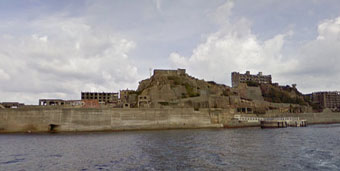Drives past during 2011 eruption at Sakurajima Volcano near nuclear plant 360-s vr locations
Link Location Gps ← Find Best directions
Gps Coordinates / 31.5725931,130.5691634
Japan Sakurajima Volcano Eruption 2011 News Panorama 360 Pictures
HHF9+2MM Kagoshima, Japan
Sakura-jima is on the southern end of the island of Kyushu. The volcano sits on the southern edge of the Aira caldera, the circular water-filled hole that formed on the north side of Kagoshima Bay in an eruption 22,000 years ago. Sakura-jima formed an island until 1914, when an explosive eruption produced enough material to join the island to the peninsula on the east. One of Japan’s most active volcanoes, Sakurajima released a plume of ash on November 2, 2010. A pilot reported that the plume reached an altitude of 1.5 kilometers (6,000 feet).
Gps Coordinates / 31.5762209,130.5699867
When Sakurajima erupted in 1914, it was Japan’s most powerful of the 20th century. The lava flows filled the strait separating the island from the mainland, turning the area into a peninsula. After 2011’s Fukushima disaster following the implementation of new safety rules. It’s built to withstand a tsunami of 15 meters, well below 2011’s peak tsunami height of 40 meters.
Link Location Gps / Gps Link 31.5763134 / Gps Link 31.5764991 / Gps Link 31.5765462
Gps Coordinates / 31.5763134,130.5699755 / 31.5764991,130.5699516 / 31.5765462,130.5699455
The 1914 Taisho eruption of Sakurijima volcano was Japan’s highest intensity and magnitude eruption of the twentieth century. After a 35-year period of quiescence, the volcano suddenly rewoke a few days before the eruption, when earthquakes began to be felt on Sakurajima Island. The eruption began on January 12, 1914, from two fissures located on opposite sides of the volcano, and was characterized by a complex time evolution and changes in eruptive styles.
Link Location Gps / Gps Link 31.5772837 / Gps Link 31.5780065 / Gps Link 31.5780524
Gps Coordinates / 31.5772837,130.5698524 / 31.5780065,130.5697341 / 31.5780524,130.5697234
The eruption began with a subPlinian explosive phase in which two convective columns rose from the two fissures. Both plumes were sustained for at least 2 days. This resulted in deposition of a widely dispersed tephra sequence. After this phase, the eruption evolved to a final, waning phase, shifting toward effusive activity that lasted until April 1914. During the first weeks, effusive activity was also accompanied by ash emission.
Gps Coordinates / 31.5789654,130.5693995
The complex sequence of events, characterized by contemporaneous explosive and effusive activity, is typical of several recently observed mid-intensity eruptions, such as during the 2011 eruption of Cordón Caulle, Chile. The stratigraphic sequence of the eruptive deposits from the Taisho eruption comprises alternating coarse-to-fine lapilli beds with ash beds dispersed toward the ESE and SE.
Gps Coordinates / 31.5717696,130.5685739
Sakurajima volcano erupts some 50km from nuclear plant
Aerial View of Sakurajima Volcano































